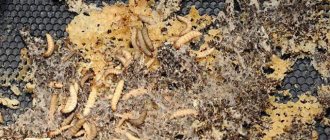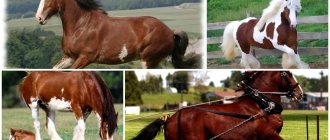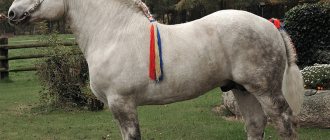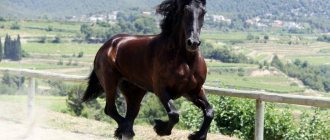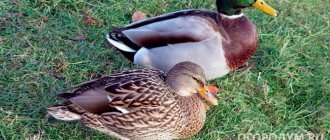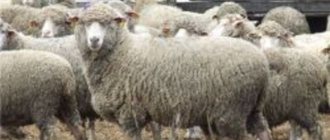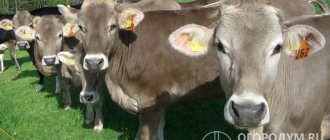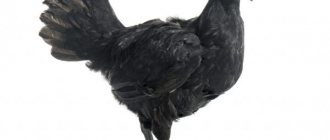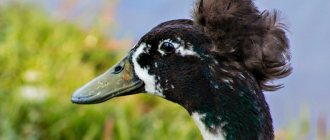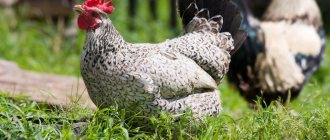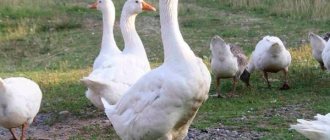The Oryol Trotter is the first factory-cultivated breed of horse in Russia. Brought out at the end of the 18th century. Count Alexei Orlov, she played a big role in the development of domestic horse breeding. Today, elegant and stately Oryol horses are called a living brand of Russia and are used in almost all types of equestrian sports and in breeding.
Origin story
In 2016, the Orlik breed turned 240 years old. Its creation and formation is a whole layer in the history of Russian horse breeding.
The breed was named after its founder, the famous commander and comrade-in-arms of Empress Catherine the Great, Count Alexei Orlov-Chechensky.
Being a cavalryman, he knew firsthand how fast and hardy horses were needed by the state.
This event, which occurred on June 28, 1762, is considered the beginning of the development of the breed.
The future Empress Catherine II traveled from Peterhof to St. Petersburg (just over 30 kilometers) in a carriage drawn by Neapolitan horses. Unable to withstand the Russian roads and distance, the horses stopped halfway due to impotence.
The situation was saved by Catherine’s companion, Count Alexei Orlov. He gathered tired peasant horses from the surrounding villages and sent the empress to the capital. At that time, according to historians, he promised Catherine that he would breed a good transport horse.
Count Orlov began his first experimental breeding work on the Ostrov estate near Moscow. In 1762, the Empress granted him lands in the Voronezh province. There he built the famous Khrenovsky stable and continued breeding trotters.
History connects the gray Arabian stallion Smetanka with the official breeding date of the Oryol trotting breed in 1776.
Count Orlov bought it from the Turkish Khan for 500 thousand silver coins. The silver-white stallion gave the future trotters the desired lightness and nobility of appearance.
Oryol horses inherited their strength and endurance from the massive Dutch and Danish sows. It took about 30 years of complex reproductive crossbreeding before Count Orlov and his assistant Vasily Shishkin achieved this result.
According to some sources, about 15 different breeds of horses were used in breeding.
The stallion Polkan turned out to be the most productive son of Smetanka. From him and a Dutch mare, the first representative of the breed, Bars I, was born in 1784. The gray trotting stallion met all the criteria of the breed in terms of exterior and working qualities.
For the next 20 years it was used as the main producer. From him and his sons (Lebed, Usan, Lyubezny) come the breeding lines of all Orlovs.
The Oryol lynx was registered as a separate breed in the breeding catalog of the Ministry of Agriculture of the Russian Federation in 2007.
About Count Orlov - briefly
Count Orlov is the brightest historical character. He was one of those who elevated Catherine the Great to the throne, a remarkable naval commander who received the title of Chesme for the defeat of the Turkish fleet. Alexey Grigorievich was a talented breeder who had limitless possibilities. In addition to the Oryol trotter, he managed to breed the Oryol riding horse breed (now called the Russian riding horse or Oryol-Rostopchinskaya), and the Oryol tumblers (a breed of pigeon that has survived to this day).
He was also an ardent fan of cock and goose fighting, and was one of the authors of the Oryol breed of chickens. He was engaged in fine-wool sheep breeding, hunted with greyhounds and hounds, and bred a breed of pointing dogs (which has not survived to this day). There is information that the count greatly appreciated canary singing.
But he became famous not only as an outstanding breeder. He created a system for testing horses and managed to train a large number of equestrian professionals: veterinarians, riders and breeders. His thirty-year selection work was continued by the serf Shishkin. Subsequently, Shishkin received his freedom, and after the death of the count he founded his own factory.
As you know, Count Orlov did not sell stallions from the stud, a few were donated to him, but after his death many horses were sold. Later, Orlov’s daughter Anna donated the stud farm to the treasury along with the remaining horses.
Description of the breed
Photo:
One of the oldest, popular factory horse breeds in Russia. Oryol trotters are distinguished by their high trotting speed and pass on their traits to their descendants, due to which stallions of this breed are widely used as improvers in mass horse breeding.
Oryol trotters are large horses. Height at withers 157-170 cm; stallions are on average 162 cm, and mares are 161 cm. The average oblique body length of a stallion is 161 cm, chest girth is 180 cm, metacarpal girth is 20.3 cm; average weight - 500-550 kg.
The modern Oryol trotter is a harmonious draft horse with a small dry head, a high swan neck, a heavily muscular back and strong legs.
These are beautifully built horses, balanced, moderate in temperament and well trained. Their posture is proud and graceful, with subtle, vertical movements of both tail and mane.
Character
The character of Oryol trotters is lively, calm, kind, and easily establishes contact with people. Breeding stallions are temperamental and playful, but they are good at following the rider's commands if trained correctly. They are not shy, but are cautious, which makes them similar to Arabian horses.
Intrabreed types
There are three types of exterior that are bred in different nurseries:
- average (“average”).
- dry (“prize”, light);
- massive (“thick”, more like a heavyweight);
Popular suits
The most common suits are gray, light gray (“white”), red-gray, gray-amber and dark gray suits. Also common are sorrel, black, and less commonly red and spotted.
Bulan and saltmarsh powder are rare, but they can also be found. The cream gene entered the gene pool of the Oryol trotting breed through the Polkana I dam.
Characteristics of the Oryol breed with photographs
The Oryol Trotter is unlike any other breed of horse. He is distinguished by his extraordinary stature, height, endurance and speed. This is a rather large animal (height at the withers is more than 170 cm), with thin but strong legs. An adult horse is lean and strong, with a powerful skeleton, weighs about 550-600 kg.
The head is small, wide and neat, with large expressive eyes and erect ears. The neck is long, slightly arched (reminiscent of a swan). The back is long, muscular, straight, and the croup is wide and strong. The mane and tail are very long and thick. The physique is proportional and harmonious. It is distinguished by graceful movements, lightness and grace.
Puberty in representatives of the breed occurs quite late, at the age of 4-5 years. But despite this, they are distinguished by good fertility, excellent health and longevity.
Temperament and character
In addition to their brilliant external characteristics, Oryol horses have a calm and docile temperament. They are tireless, extremely patient, and do any job. They get along well with strangers and other animals.
Due to their character, they can be used in tourist trips, hippotherapy, sports competitions or agricultural work. But do not forget that Orlov residents are very fast and playful, they are distinguished by curiosity and restlessness.
They are very sensitive and, if handled carelessly, will show dissatisfaction and aggression.
Oryol trotters are easy-going, but at the same time very temperamental and hardy.
Oryol trotter colors
The most common color for the Orlovets is dapple gray, light or dark gray. Somewhat less common are bay or black horses. Very rarely, Oryol horses can be dun or nighting. Such specimens are almost never seen anymore.
Usage
Despite its name, the Orioles Trotter is a versatile breed. It is used
The eagle trotter is used in equestrian sports under saddle (jumping, dressage). Its main use is in harness (pairs, triplets, quadruples). Today the eagle is popular not only in trotting racing, but also in carriage driving.
Russian cab drivers loved Oryol trotters for their ability to run long distances at an even pace. The horses have a wide and regular trot, during which the carriage hardly shakes even on rough roads.
In Soviet times, well-balanced Eagles were used in police cavalry.
In domestic horse breeding, the Oryol horse is used for the selection of draft breeds, improvement of agricultural breeds and some riding breeds.
The nature of animals and areas of their use
Horses of the Oryol breed have an energetic, but rather docile, calm and obedient character. Their peculiarity is high sensitivity. However, if they are not handled carefully, they may demonstrate fear, aggression and intimidation. There are very few embittered individuals among the entire population; mostly the animals are kind, gentle and affectionate. These qualities are the main reason that horses of this breed are often used as pleasure horses and used for children's and adult rehabilitation.
Several centuries ago, the demand for trotters was simply enormous. It was the Oryol residents who were most often harnessed to the royal carriages and traditional Russian troikas. In ancient times, it was impossible to imagine cavalry without Oryol horses. Hardy horses were often used by coachmen and people involved in agriculture. The flexible animals coped well with cultivating large fields and transporting peasants' carts.
With the development of the mechanization process, the demand for working horses decreased significantly. The number of animals fell sharply. The main scope of use of horses also changed: now Oryol horses were increasingly used not for hard work, but for participation in sports competitions. One of the most popular disciplines of that time was running with rocking chairs. Today, horses of this breed perform in dressage and competitions.
Animals take part not only in competitions held for representatives of different breeds. There are also competitions created specifically for Oryol horses. Among the most famous: “Prix of Paris”, “Prix Peony”, “Prix Barca”. Tournaments are held in Russia and abroad.
Advantages and disadvantages
According to breeders, the advantages of Oryol trotters include:
- High reproductive rates.
- Inaccuracy regarding housing and feeding conditions;
- Tolerance towards people;
- Calm disposition;
- Stability of genes in the transmission of trotting traits;
- ability to trot for a long time;
- Impressive appearance;
- Their versatility;
- High speed performance for racing;
- Ability to adapt to different climatic conditions;
Disadvantages, which are not serious, sometimes include:
- Late achievement of puberty (at the age of 4.5-5 years).
- The high cost of each animal;
Stages of development of horse breeding
At the end of the 19th century, American breeds began to be imported into Russia. They were faster, and the Oryol trotters constantly lost to them in the race. In America, horse breeding was better developed; special training programs were developed for each individual. In all other characteristics, American specimens were inferior to Russian trotters.
During this period, crossing of American and Oryol horses began. There were many supporters and opponents of these actions. It was planned to improve the speed qualities of the Orlov residents without losing other genetic characteristics. Most of the experiments were unsuccessful. As a result, the breed was in danger of extinction.
1920-1930
In the period from 1920-1930, Russia again returned to purebred breeding. Horse breeding is booming. The training was carefully thought out and had a system. They took care of the horses and created comfortable living conditions for them. The Civil and Great Patriotic Wars seriously reduced the number of livestock.
1940-1940
The peak of popularity of trotters. Horses participate in many competitions, set records, and receive prizes. Sea Surf was popular and famous; his record lasted 38 years. No less famous was a horse named Square. He has repeatedly won prizes at exhibitions in the “Best Exterior” category. Participated in races. With the end of his sports career, he was sent to a stud farm and sired 600 foals and mares. No less titled was the stallion Peony. He also won competitions and exhibitions and produced strong, genetically ideal offspring.
1990s
In the 90s, the breed was on the verge of extinction due to the economic recession in the country. We managed to save her by teaming up with breeders from the CIS and France. All stud farms in Russia have focused on breeding Oryol trotters. Cash prizes have been increased at the competitions.
Read about an unusual horse color - bay horse.
Breeding
Oryol trotters are a late-ripening breed; the development of individuals is completed no earlier than 5 years of age. The Oryol trotter is a late maturing horse; a young trotter reaches full maturity at the age of 5 years.
Despite their late maturity, Oryol trotters are distinguished by their long life span and high fertility.
Depending on the conditions of detention, hereditary factors and other circumstances, the average fertility varies. At least 80-90 foals are born per 100 mares per year.
To obtain offspring, two methods are used: natural pregnancy and artificial insemination. Both methods are based on the correct selection of the stallion.
It is assessed according to three criteria: conformation (appearance), energy (dexterity) and color. The insemination process for mares begins in February and ends in June.
Foals remain with their mother from birth until 6 months of age, and only after that they are transferred to specially designated areas (groups).
The training of young foals begins immediately after weaning, and already at the age of 2 years they “pass the exam” by participating in races at the hippodrome.
Lifestyle in nature
Visually, the Oryol trotter differs from other horses and catches the eye with its grace, swan neck and magical stature, while the horse has strong, strong limbs. Today, Count Orlov's trotter is considered one of the tallest horses, as its height reaches 165-170 cm to the withers. But the horse’s dimensions do not prevent him from maintaining lightness and dynamism; a small head, a long high neck, an elongated back and a lean torso look harmonious.
Oryol trotters conquered the world with their proud posture, high ceremonial movements, grace and nobility.
Caring for Orlov Trotters
The horse requires a special approach. There are several clear rules for caring for the Orlov Trotter, which the stallion himself accepts and expects from the owner.
- Mane. You need to comb your hair regularly; many people even prefer to braid their hair; the horse will not mind such attention to his person. Thorough cleaning of your trotter is key to your trotter's health. Every day you need to brush your horse's hair with a natural hair brush. The mane itself is combed with a wooden comb.
- After bathing and intense exercise, the horse must be cleaned of moisture and sweat. It is preferable to start cleaning on the left side of the horse. The limbs also need to be brought to a smooth, cleaned state.
- After active pastime, horses clean their nostrils using a damp sponge. In the summer season, the Oryol stallion is washed with a hose, starting with the limbs, which are invigorated by a contrast shower. If you leave moisture on the horse, you can get an infection.
- The vulnerable withers need to be protected by choosing a comfortable saddle. Horses with high withers require a special saddle, which includes shock absorbers, which contain gels and foam.
Nutrition
The performance and health of the Orlov Trotter directly depends on its nutrition. The horse's diet must contain animal minerals and vitamins, as well as fresh grass daily. In the summer, the basis of nutrition is exclusively fresh grass. A foal needs about 30 kg of this food per day, and an adult trotter needs at least 50 kg.
In winter, the trotter's diet should consist of half hay, 10-15 kg per day. It is also important to maintain the horse’s strength with grain crops - oats, rye, barley, corn, wheat and much more. You can also supplement your horse’s nutrition with beets, carrots and potatoes, bone meal, dry yeast, and fish oil.
Training
As practice shows, the Oryol trotter easily learns to overcome obstacles and also quickly learns commands. Horses try their best to meet their owner's expectations. Especially if the Oryol trotter was bred by the field of his birth and raised by one person. This is because the trotter will not make concessions to a person whom he knows little.
Any violent coercion or punishment is prohibited; due to excessive sensitivity, the horse may completely refuse obedience. You can stop a stallion only with a rope, but not with a whip.
Content
For all its elegance and nobility, the breed of eagles is not demanding in terms of living conditions. It adapts well to new climatic conditions and new feeds.
Horses are cared for as usual at home. However, in racing facilities, during testing and training, the quality of special care is fundamental to the health and performance of the trotter.
Mandatory procedures:
- Preventative work before races and prizes - the use of hot blankets and mustard plasters.
- Preventative measures after racing and training - muscle massage, rubbing with straw, disinfection;
- Preventive measures after racing or training include brushing, combing, combing the mane and tail, and cleaning the hooves;
- Prevention of tendon and ligament diseases - bandaging, clay dressings, special ointments;
- daily cleaning of feeders and drinkers, washing once a week with warm water and baking soda;
- Daily cleaning of the barn in the morning and evening - removing manure and wet bedding, loading fresh bedding;
Feeding
The feeding ration largely depends on the purpose of the horse, as well as on age, sex and physiological condition. The basis of the diet is grass and hay.
Preferably hay from meadows, clover and alfalfa. Also add the oatmeal-vinegar mixture, wheat bran and carrots. As for grains, horses are fed oats, corn and barley.
In addition to traditional feeding, breeding and sport horses receive
- herbal granules;
- haylage;
- protein and vitamin and mineral supplements.
- Mixed feed;
- silage;
- syrup;
- cake;
Carrots and sugar beets are considered dietary succulents.
Preparation and feeding rations:
Feed horses at least 3 times a day, with heavy work in between and during breaks. First roughage, then concentrates 60 minutes before work. Half of the daily ration of roughage is fed at night.
Water is given 3 times a day before feeding, but not earlier than 1.5-2 hours after physical activity.
Stable care
Such a large and energetic animal requires a fairly spacious barn with boxes measuring 3x3 meters.
In winter, temperatures can drop below zero for a short time, and Oryol trotters and their foals tolerate this quite easily, provided there are no drafts.
However, warmth is better for horses, so the walls of the stable should be insulated (for example, with polystyrene), and there should be bedding at least 20 cm thick on the wooden floor:
- straw;
- hay;
- dry peat
- sawdust;
It should not be too hot in the barn (the optimal temperature never exceeds +23°C, and air humidity is between 45-50%). In order to increase the amount of daylight in winter, the barn must be artificially lit.
Important: The stable should be dark at night so that the horses can rest well, so artificial lighting should be turned off at night.
Horse stalls must be equipped with feeders and drinking bowls.
Typically, a wooden plank feeder is installed so that it is accessible from both inside and outside the barn. The same applies to drinkers.
This makes it easier to fill and maintain feeders and waterers without disturbing the horse.
Disease Prevention
To keep trotters healthy, you need to not only take good care of them, but also keep their stalls hygienically clean. To do this, remove manure daily and change soiled bedding (dry bedding is the best way to avoid dermatitis).
The feeder and drinker should also be cleaned at least once a week with warm water and baking soda. The walls and partitions of cubicles should also be cleaned regularly.
As a precaution and in case of health problems for trotters, you should stock up on a first aid kit:
- alcohol and salt;
- iodine and camphor;
- bandage;
- a mixture of Vaseline and fish oil;
- camphor alcohol;
- hoof ointment;
- cotton wool
- turpentine;
- turpentine;
- hydrogen peroxide;
Nutrition
Nutritional standards largely depend on the purpose of use of the horse, as well as age, sex and physiological condition. The basis of the diet is grass and hay. It is better to use meadow, clover and alfalfa hay. A vetch-oat mixture, wheat bran and carrots are also added. For grain, horses are given oats, corn and barley.
Along with traditional feed, breeding and sport horses are given:
- compound feed;
- molasses;
- herbal granules;
- cake;
- haylage;
- silage;
- protein and vitamin and mineral supplements.
Carrots and sugar beets are recognized as dietary succulent food.
Feed preparation and standards:
| Type of feed | Method of preparation | Without work (kg) | At average load (kg) |
| Hay | Without preparation | ad libitum | 25 |
| Straw | Pre-steamed and flavored with bran and mixed feed | 10 | 10 |
| Bran | Give moistened or mixed with feed | 3 | 4 |
| Oats | Flattened | 6 | 12 |
| Corn, barley | Crushed | 6 | 8 |
| Sunflower cake | Together with concentrates | 2 | 3,5 |
| Carrot | Washed, cut | 8 | 10 |
| Beet | Washed, cut | 8 | 12 |
| Silage | Without preparation | 15 | 25 |
| Haylage | Without preparation | 12 | 20 |
| Meadow grass | Without preparation | ad libitum | ad libitum |
| Syrup | Diluted in 4-5 liters of water, flavors roughage | 1,5 | 1,5 |
Horses are fed at least 3 times a day, during heavy work - in intervals and breaks. First, give roughage, then concentrates 60 minutes before work. Half the daily requirement of roughage is given at night.
Give water 3 times a day before feeding, but not earlier than 1.5-2 hours after physical activity.
Famous Oryol stallions
Strength
- Bars 1, the ancestor of all lines, played a special role in the development of the breed.
- Square, the pride and symbol of Moscow Stable No. 1, born in 1946, was the only stallion to whom two monuments were erected during his lifetime. He never lost a single race in his entire career. She gave birth to more than 600 thoroughbred trotters.
- Krepushin is the “horse of the century”; he set a Russian record at a distance of 1600 m, covering it in 2 minutes and 8.5 seconds. A strong horse gave hope to the entire Russian horse breeding during the years of rapid development of the American trotter.
- Cowboy is the modern Russian record holder. In 1991, the chestnut stallion, ridden by rider Mikhail Kozlov, showed a time of 1 minute 57.2 seconds.
- Pion is an invincible stallion of Soviet times, the ancestor of the popular line of large Oryol horses - the Pion line.
The modern speed record was set by the stallion Sorrento, the only Russian horse to compete in the most prestigious prizes abroad. Sorrento clocked 1.56.8 over 1609m in Nice under Mikhail Kozlov. At the moment, there are no horses faster than Oryol trotters in horse racing.
Records of Oryol trotters
For 19-20 centuries, Oryol trotters have been the fastest representatives of the trotting breed in Europe.
In 1836, at the age of eleven, the bay stallion Bull (parents: Young Atlas - Domestic) became the first record holder in the breed at a distance of 3.2 km in 5.45 seconds.
In 1867, the stallion Poteshny (parents: Polkanchik – Plotnaya) covered the same distance in 5.00 seconds.
In 1910, the famous Krepysh (parents: Gromodny - Coquette) already set a record at the same distance - 4.25 seconds.
In 1934, at the age of six, the stallion Ulov (parents Lovchiy - Udachnaya) achieved a record of 4.20 seconds.
The stallion Peony holds the modern record for this distance - 4.13 seconds. The record was set in the time trial shown.
Interesting Facts
Oryol trotters became a source of inspiration for the work of many writers - Leo Tolstoy, Alexander Kuprin and others. An example of a literary work can be a book by this author. An example of a literary work is the book by Peter Shiraev “Taglioni’s Grandson”. (1928) about the eagle trotter Least.
The writer A.I. Gertel, himself a native of Voronezh, where the famous Khrenovsky establishment is located, described the life associated with breeding Oryol horses in the novel “Gardens, Their Courtiers, Supporters and Enemies.”
Eagle trotters are depicted in many works of art, e.g.
- Paintings by Russian artist Nikolai Sverchkov (1817-1898), who especially often mentioned Oryol trotters in his works.
- The painting “Oryol trotters in harness and a dog” (1861) by the German artist Rudolf Zurlandt from the collection of the Museum of Horse Breeding of the Moscow Academy named after K. A. Timiryazev.
The following films are also known:
- “Lyubushka” - 1961 film based on the book by P. Shiryaev “Taglioni’s Grandson”.
- “The Trotter” is a film based on P. Shiryaev’s book “Taglioni’s Grandson” from 2005.
- “Krepush” is a 1982 film about an Oryol trotter named Krepush.
The Oryol horse breed has been repeatedly reproduced on postage stamps of several countries:
- Moldova - 2002 R,
- USSR - 1968
- Ukraine - 2005
- Azerbaijan - 1993, 1997,
- Tanzania 1991,
- Bhutan 1999,
- Russia - 2007,
Caring for the Oryol horse
With all the grace and nobility, the Oryol breed of horses is not demanding in maintenance. She adapts well to a new climate and new food. At home, horse care is standard. However, during racetrack keeping, as well as during testing and stress, high-quality special care is the basis for the health and productivity of a trotter.
Mandatory procedures:
- daily cleaning of the stall in the morning and evening - removing manure and wet litter, beating fresh litter;
- daily cleaning of feeders and drinkers, washing with hot water and soda once a week;
- cleaning the horse before gathering or training - cleaning the coat with a scraper and brush, combing the mane and tail, trimming the hooves;
- prevention of diseases of the tendon and ligamentous apparatus - bandaging, smearing the limbs with gray clay, special ointments;
- preventive measures after races and training - muscle massage, rubbing with a straw tourniquet, wiring;
- preventive maintenance before races and prizes - the use of hot blankets and mustard plasters.
Origin of apples in horse coloring
Some experts believe that this pattern on the horse’s body is formed by graying hairs, areas that stand out against a darker background. In the horse's apples, rounded areas of light hair repeat the pattern of blood vessels. Some horse breeders believe that apples appear in those horses whose nutrition is balanced in vitamin and mineral composition. Good care and excellent living conditions guarantee an excellent appearance of the horse in apples. The presence of a gene responsible for such a pattern on a horse’s body cannot be ruled out either. This explains why foals inherit the apple color, but this does not happen in all cases.
Rice. Orlovsky in apples trotter in winter
